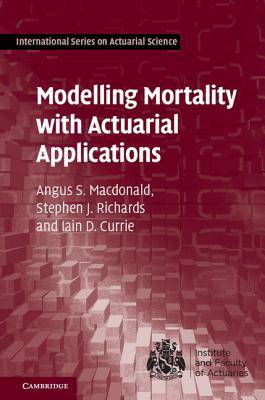
- Afhalen na 1 uur in een winkel met voorraad
- Gratis thuislevering in België vanaf € 30
- Ruim aanbod met 7 miljoen producten
- Afhalen na 1 uur in een winkel met voorraad
- Gratis thuislevering in België vanaf € 30
- Ruim aanbod met 7 miljoen producten
Zoeken
Modelling Mortality with Actuarial Applications
Angus S MacDonald, Stephen J Richards, Iain D Currie
€ 123,95
+ 247 punten
Omschrijving
Actuaries have access to a wealth of individual data in pension and insurance portfolios, but rarely use its full potential. This book will pave the way, from methods using aggregate counts to modern developments in survival analysis. Based on the fundamental concept of the hazard rate, Part I shows how and why to build statistical models, based on data at the level of the individual persons in a pension scheme or life insurance portfolio. Extensive use is made of the R statistics package. Smooth models, including regression and spline models in one and two dimensions, are covered in depth in Part II. Finally, Part III uses multiple-state models to extend survival models beyond the simple life/death setting, and includes a brief introduction to the modern counting process approach. Practising actuaries will find this book indispensable, and students will find it helpful when preparing for their professional examinations.
Specificaties
Betrokkenen
- Auteur(s):
- Uitgeverij:
Inhoud
- Aantal bladzijden:
- 384
- Taal:
- Engels
- Reeks:
Eigenschappen
- Productcode (EAN):
- 9781107045415
- Verschijningsdatum:
- 3/05/2018
- Uitvoering:
- Hardcover
- Formaat:
- Genaaid
- Afmetingen:
- 164 mm x 233 mm
- Gewicht:
- 752 g

Alleen bij Standaard Boekhandel
+ 247 punten op je klantenkaart van Standaard Boekhandel
Beoordelingen
We publiceren alleen reviews die voldoen aan de voorwaarden voor reviews. Bekijk onze voorwaarden voor reviews.











